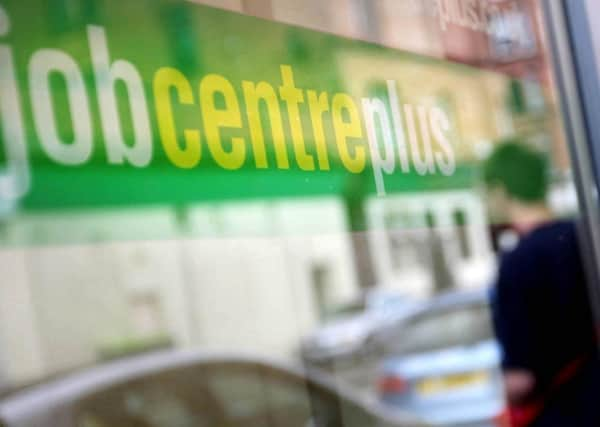Jobless figures show massive fall


The Office for National Statistics (ONS) said the 167,000 fall over the last quarter was the second-largest since records began in 1971.
At 7.1 per cent, the UK’s unemployment rate is now just a whisker above the threshold at which Bank of England Governor Mark Carney said interest rates could begin to rise.
Advertisement
Hide AdAdvertisement
Hide AdThe positive jobs news was far less dramatic in Yorkshire, however, where unemployment fell by just 8,000 over the three-month period – less than five per cent of the national total.
However, officials at the Department for Work and Pensions (DWP) pointed to further figures showing the number of people in work in the region rose by 28,000 over the same period, and by 58,000 over the past 12 months.
Speaking in the Commons, David Cameron hailed the news as further proof his Government’s economic plan “is working”, with more than a quarter of a million extra jobs created in just three months.
“What we see today is the biggest ever quarterly increase in the number of people in work in our country,” the Prime Minster said. “There should not be one ounce of complacency, but there are 280,000 more people in work; that is 280,000 more people with the security of a regular pay packet.”
Advertisement
Hide AdAdvertisement
Hide AdThe news was also welcomed by Labour, though leader Ed Miliband warned that wages are still lagging far behind prices and that, as a consequence, for many families “life is getting harder”.
Labour’s John Healey, the Wentworth and Deane MP and a former Treasury Minister, warned the employment recovery has not been mirrored across the country.
“Of course it’s great news that at last we’re starting to see significant falls in those out of work... but Yorkshire’s not getting a fair share of that fall,” he said. “I have deep concerns that our region is still not seeing the benefits of an upturn in the economy that others are beginning to experience.
“As our economy slowly starts to emerge from the doldrums, it’s essential that Yorkshire isn’t left behind – but these figures show that may already be starting to happen.”
Advertisement
Hide AdAdvertisement
Hide AdBusiness leaders welcomed the jobs news, with some suggesting wages will also finally begin to rise this year.
Chris Glen, West Yorkshire chairman for the Federation of Small Businesses, said: “Another set of positive unemployment figures reflect what our members tell us about their recruitment intentions. While weak pay growth remains a concern, we are hopefully turning a corner – with seven in 10 small firms intending to increase staff pay in the next 12 months.”
The sharp fall in the unemployment rate immediately prompted speculation that interest rates could rise as early as this year, with the jobless figure closing in on the “forward guidance” target of seven per cent set by the Bank’s policymakers only last August.
The guidance was designed to give confidence to households and firms that access to finance would remain cheap while the economy was nursed back to health.
Advertisement
Hide AdAdvertisement
Hide AdRates have been held at a historic low of 0.5 per cent since March 2009 and at the time of setting the guidance policy, the Bank’s forecasts for unemployment meant officials did not expect to have to consider raising them until late 2016 at the earliest.
But the quicker than expected pace of falling unemployment – down from 7.4 per cent in the quarter to October – has prompted markets to bring forward the date of an expected increase in the rate.
Comment: Page 12.